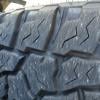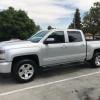Wheel Hop/Skid at Full Left/Right Turn
-
Similar Content
-
- 0 replies
- 3,275 views
-
- 6 replies
- 2,793 views
-
- 1 reply
- 3,960 views
-
- 4 replies
- 18,915 views
-
- 1 reply
- 1,623 views
-
-
Recently Browsing 0 members
- No registered users viewing this page.
-
Forum Statistics
246k
Total Topics2.6m
Total Posts -
Member Statistics
-
Who's Online 13 Members, 0 Anonymous, 1,933 Guests (See full list)

















Recommended Posts
Join the conversation
You can post now and register later. If you have an account, sign in now to post with your account.